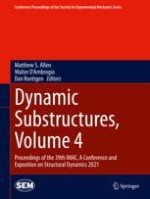2022 | OriginalPaper | Buchkapitel
8. Experimental Framework for Identifying Inconsistent Measurements in Frequency-Based Substructuring
verfasst von : Miha Kodrič, Gregor Čepon, Miha Boltežar
Erschienen in: Dynamic Substructures, Volume 4
Aktivieren Sie unsere intelligente Suche, um passende Fachinhalte oder Patente zu finden.
Wählen Sie Textabschnitte aus um mit Künstlicher Intelligenz passenden Patente zu finden. powered by
Markieren Sie Textabschnitte, um KI-gestützt weitere passende Inhalte zu finden. powered by
